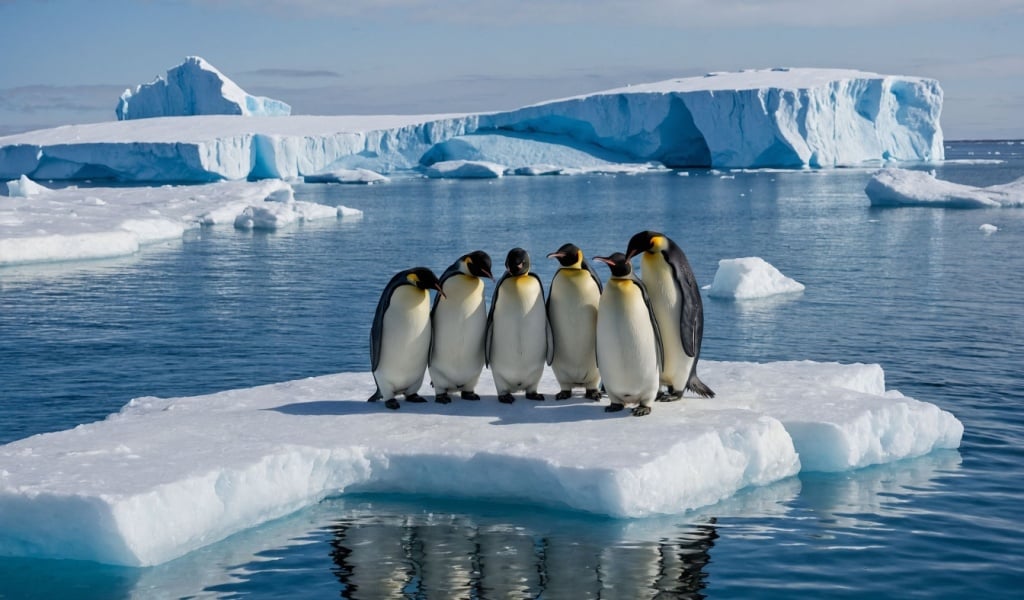Since penguins are more than just waddles and winter coats.

Penguins, nature’s oddballs in tuxedos, are more fascinating than you might have thought. They may waddle on land, but they move in style below the waves at the speed of little submarines!
Whether you’re an enthusiastic nature lover or appreciate a good penguin meme, be prepared to learn some incredible facts that will challenge everything you thought you knew about these extraordinary birds.
Penguins Swim Very Fast Under Water
It’s shocking, right? But penguins are one of the fastest-swimming birds in the world. The gentoo penguin can reach up to 22 mph (35 km/h) speeds! Although evolution has transformed what were once wings into flippers, they provide an incredible advantage to these fascinating creatures. Their torpedo-shaped bodies and flippers, which serve as paddles, help decrease drag. Underwater, they use quick bursts of speed to escape predators, such as leopard seals, and capture prey, including krill and tiny fish.
Penguins Have Enhanced Vision and Inbuilt Goggles
Penguins have brilliant vision that helps them navigate the depths of the ocean. They can concentrate in the air and underwater, a unique ability among birds. Moreover, they’ve developed special glands to filter salt from the water they ingest, enabling them to drink seawater without issue. The filtered salt is then released through their noses and sometimes sneezed out.
Penguins Live on All the Continents in the Southern Hemisphere
Many species of penguins live in Antarctica, specifically the royal emperor penguin. However, the penguin species is much more diverse. Penguins are remarkably cosmopolitan, from Patagonia’s beaches to the Galápagos Islands’ volcanic rocks. The Galápagos penguin is the only kind living north of the equator—some, like the African penguin, like Mediterranean-style weather. Thus, while they’re cold-hardy, they’re not just animals of the snow.
Pebbles, Singing, and Dancing Are Part of Their Mating Rituals
Love among penguins can be amazingly passionate and competitive. Male Adélie and gentoo penguins present pebbles to potential mates, and the finest, softest pebbles are hot commodities. If a female takes the offering, it becomes an element of their nest. Some penguins, like the king and emperor species, sing and dance for their mates, too. And surprisingly, some of these penguins are monogamous, returning to the same companion every season (however, not all maintain that level of commitment).
Emperor Penguins’ Parenting Style
The emperor penguin’s parenting story is legendary among survivalists. After laying a single egg, the female goes to the ocean for weeks to feed, while the male stays behind in the harsh Antarctic winter to hatch the egg. For more than two months, he balances it on his feet, under a warm flap called a brood pouch. He doesn’t eat at this time. Instead, he lives on body fat and the company of other fathers, gathering together in tight circles for warmth. That’s parental commitment at its best!
Penguins Make a Lot of Noise
Penguins are generally expected to be noisy, which is typical in large colonies with thousands of birds. From braying to honks, whistles, and even trumpets, penguins are loud when they communicate. Like humans, penguins have distinguishable voices, allowing baby penguins and mates to recognize each other among the group, even in the chaos of a crèche!
Penguins Glow When Exposed to UV Light
According to recent research, certain penguins, especially crested species, have feather patches that glow. While these patches are invisible to the human eye under normal light, it’s believed that penguins might be using them for mate attraction or species identification. However, this remains somewhat of a mystery.

Penguin Stools Influence the Ecosystem
Yes, we’re talking about penguin poop, and it’s more significant than you may think. Penguin stool, also known as guano, is rich in nitrogen and serves as a natural fertilizer in the subtropical Antarctic environment. Over time, big penguin groups can change the landscape simply through guano buildup. There’s so much of it, and its color is so exclusive, that professors have been able to identify and monitor penguin colonies using satellite pictures that capture the pinkish-brown stains near their nesting places. Yes, you heard it right, their poop is visible from space!
Their Biggest Threat Is Climate Change
Penguins are suffering due to global warming. Melting sea ice is destroying nesting grounds, while warming waters also impact their food supply. Overfishing and plastic waste also put pressure on populations. Particular species, such as the emperor and Adélie penguins, are already displaying signs of stress through changes in migration patterns, breeding failures, and decreasing numbers. Environmentalists advocate for strict regulations for marine sanctuaries and more sustainable fishing methods to ensure penguins don’t waddle into extinction.
Penguins are Today’s Living Dinosaurs
Penguins evolved shortly after the extinction of the non-avian dinosaurs, approximately 66 million years ago. According to Fossil records, ancient penguins were the size of humans, with some reaching heights of up to 6 feet and weighing over 200 pounds. Although today’s penguins are smaller, they continue the legacy of ancient survivors, evolving to live in one of Earth’s most hostile environments.
The Challenge of Molting Season
Penguins don’t lose feathers slowly like many birds. Instead, they undergo a “catastrophic molt,” losing all their feathers over 2–3 weeks. During this period, they won’t be able to swim or feed. They bulk up earlier and bear this awkward, itchy change on land. Imagine a creature that looks half-penguin and half-plucked chicken!
Penguins Can Jump High
To get out of the ocean and shoot onto land or ice, penguins execute a technique called “porpoising.” They build up speed underwater, then shoot straight out like a sky rocket, landing on ice cliffs up to six feet high. This jumping skill helps them evade predators and reach safe resting places that would otherwise be impossible.
Penguins Have a Built-In Cooling System
Despite being covered in bushy feathers and layers of insulating fat, penguins have a unique adaptation to prevent overheating, particularly those living in warmer areas. They can regulate blood flow to their flippers, feet, and beak, allowing them to release excess heat. They frequently pant or spread their flippers to release heat like an internal air conditioner in hot climates.
Waddle of Wisdom
Penguins present a tale of survival, adaptation, and now, extreme environmental fragility. These amazing birds need more than appreciation; they need action.
Therefore, next time you see a penguin on the Discovery Channel or at the zoo, remember: they’re more than just waddling miracles. They’re underwater artists, environmental engineers, and living artefacts of a prehistoric past, all wrapped in one elegant feather suit!



